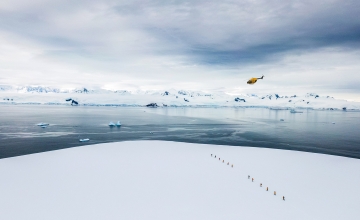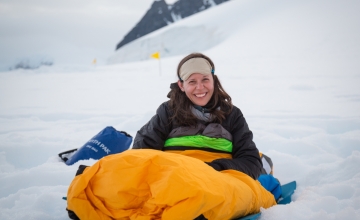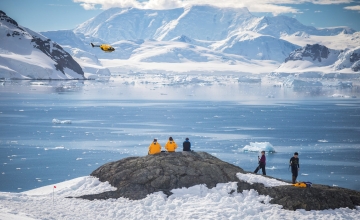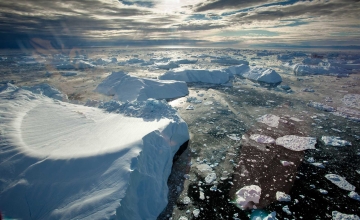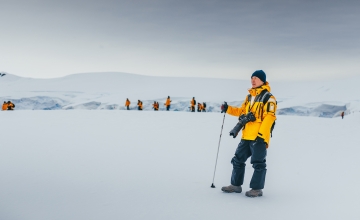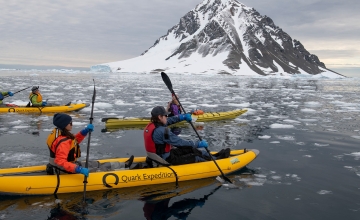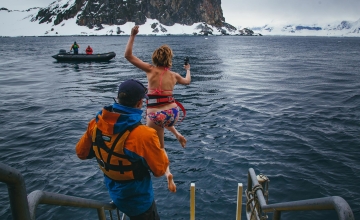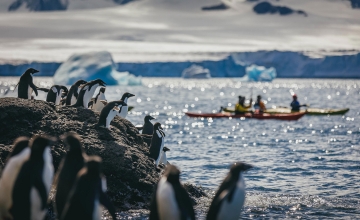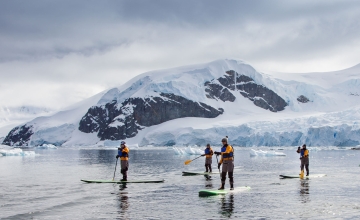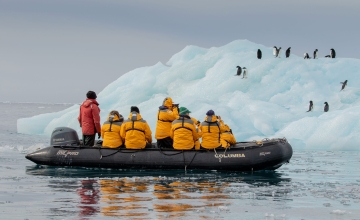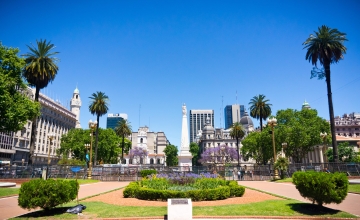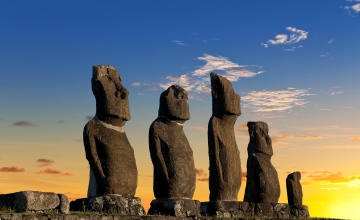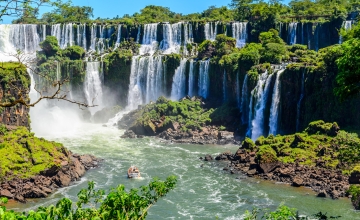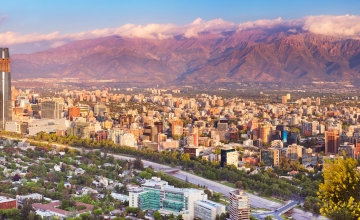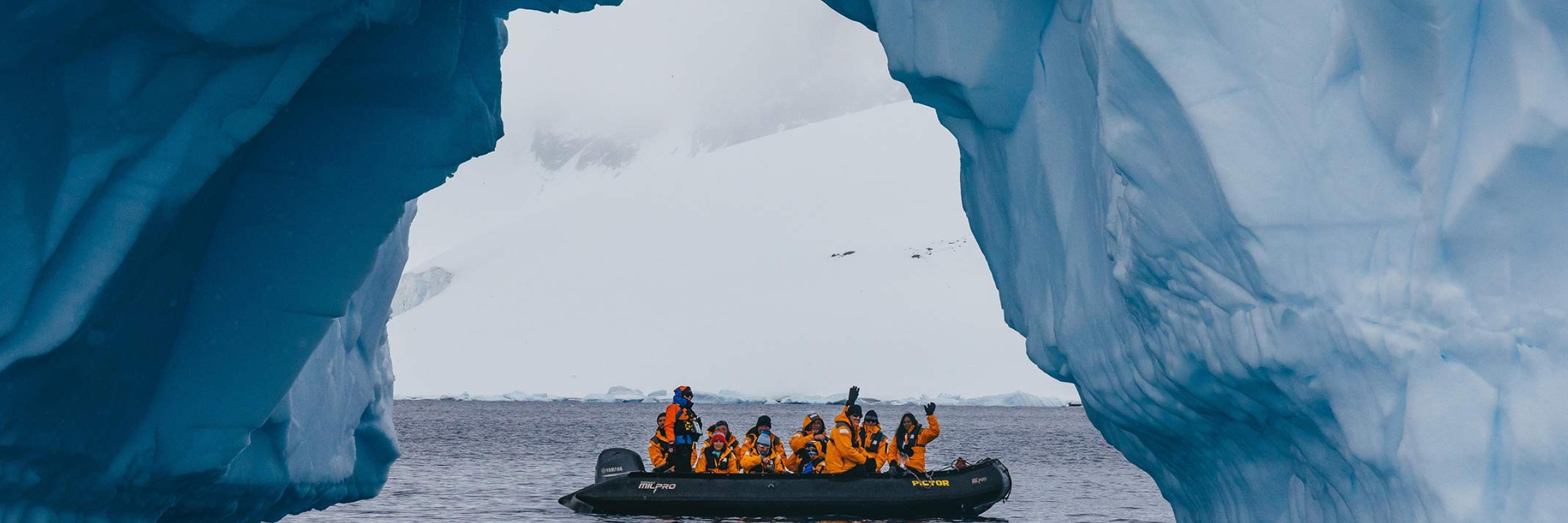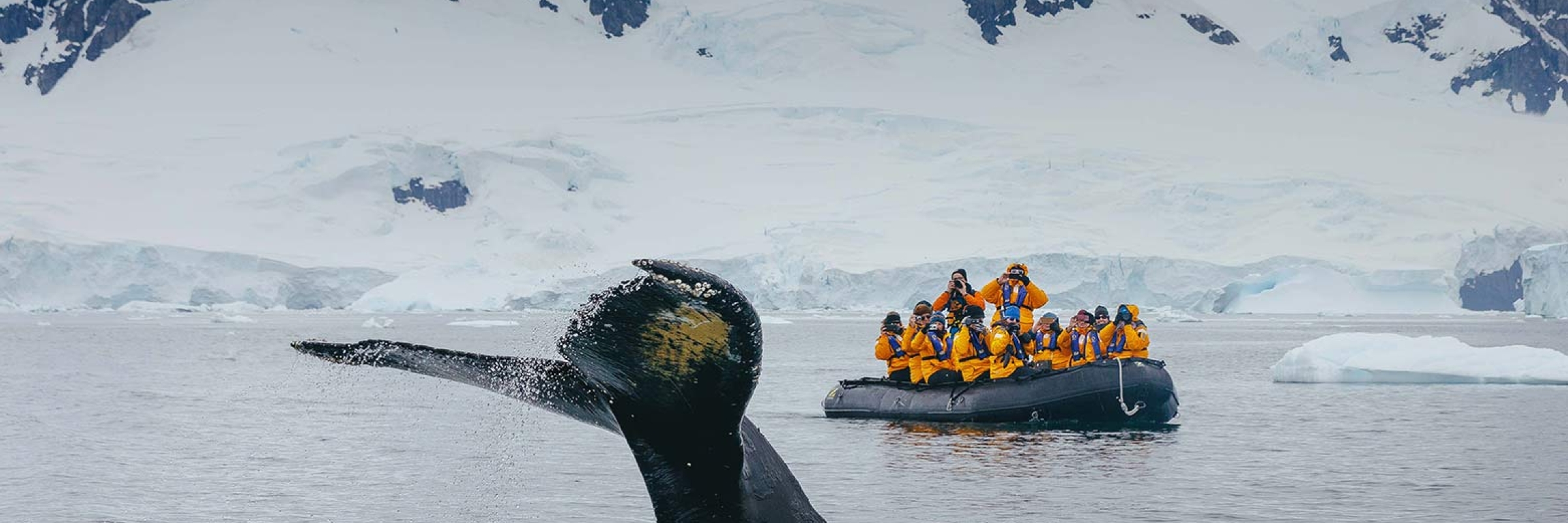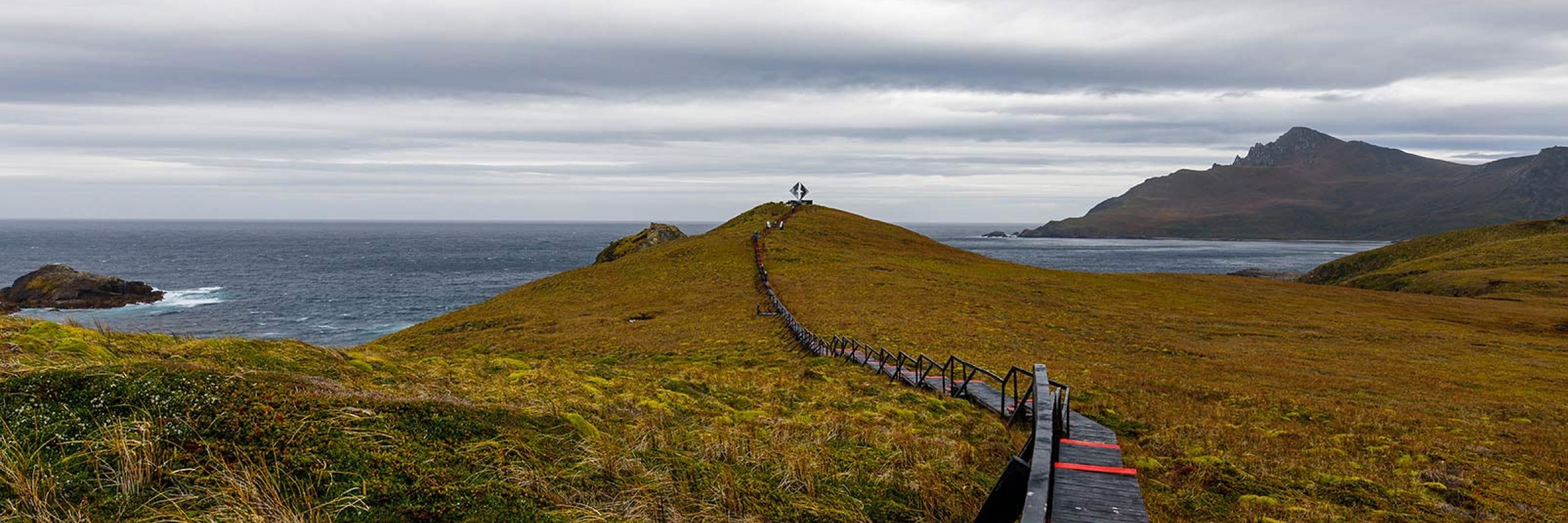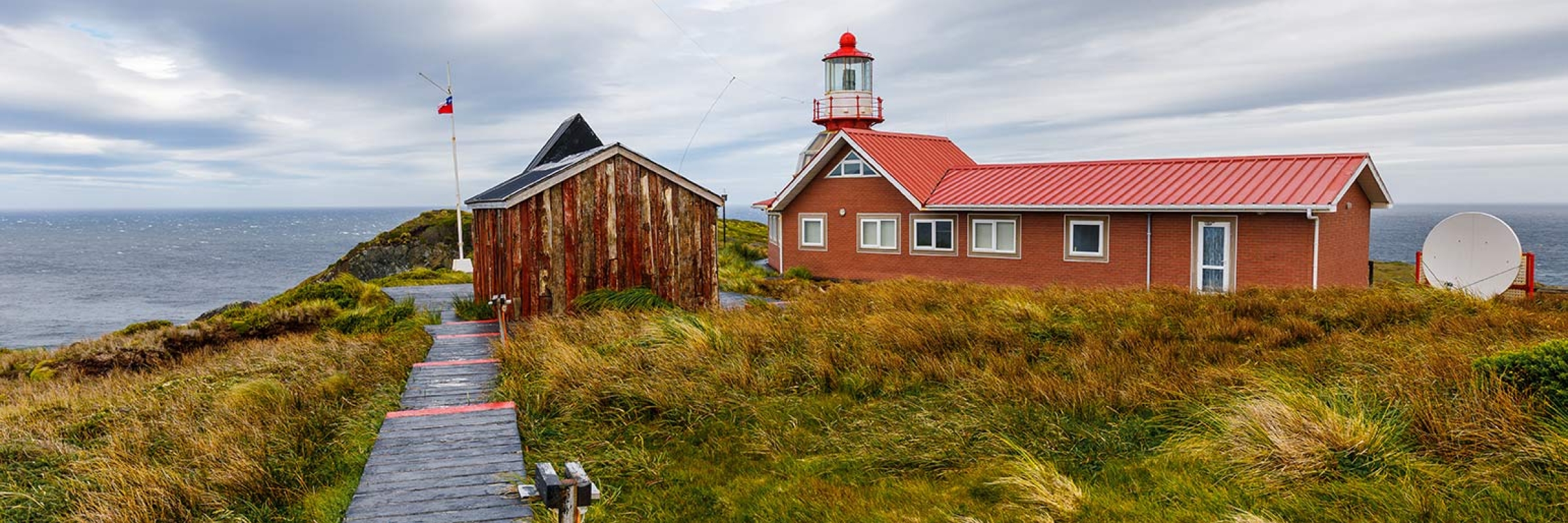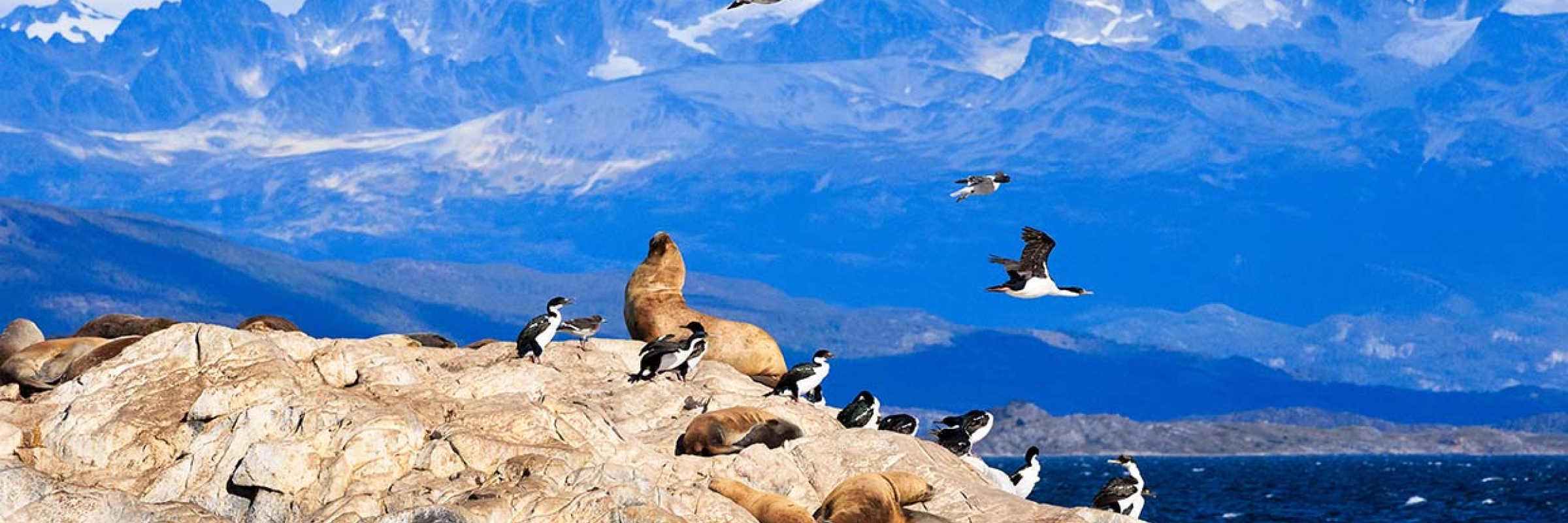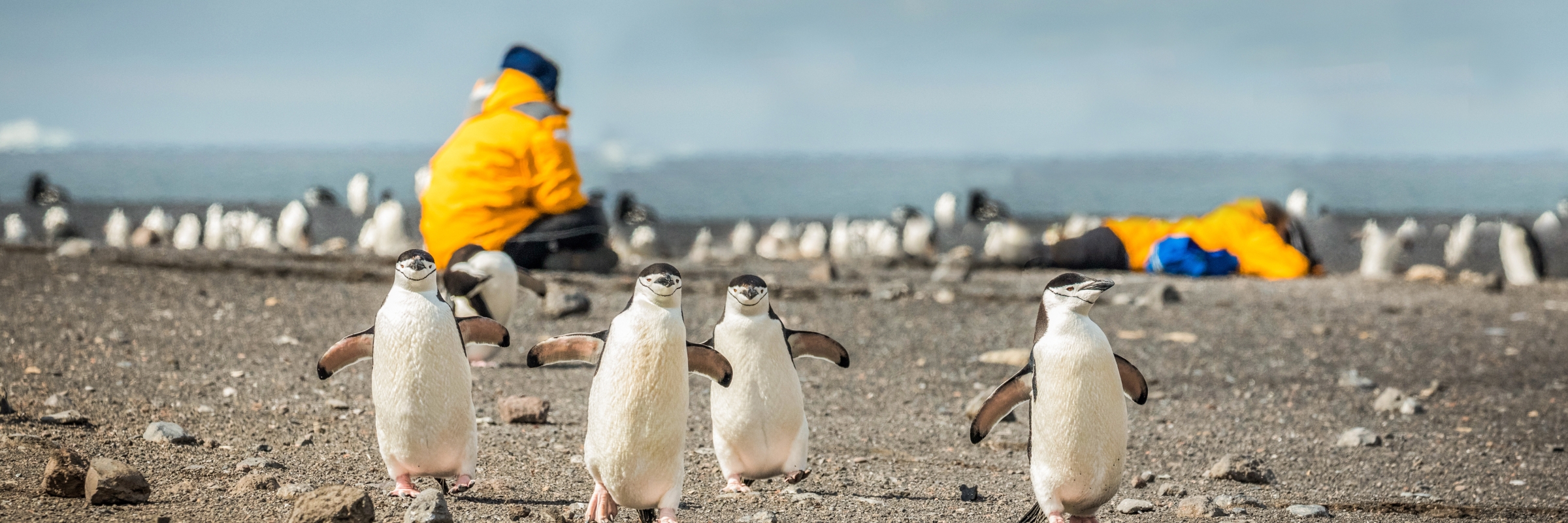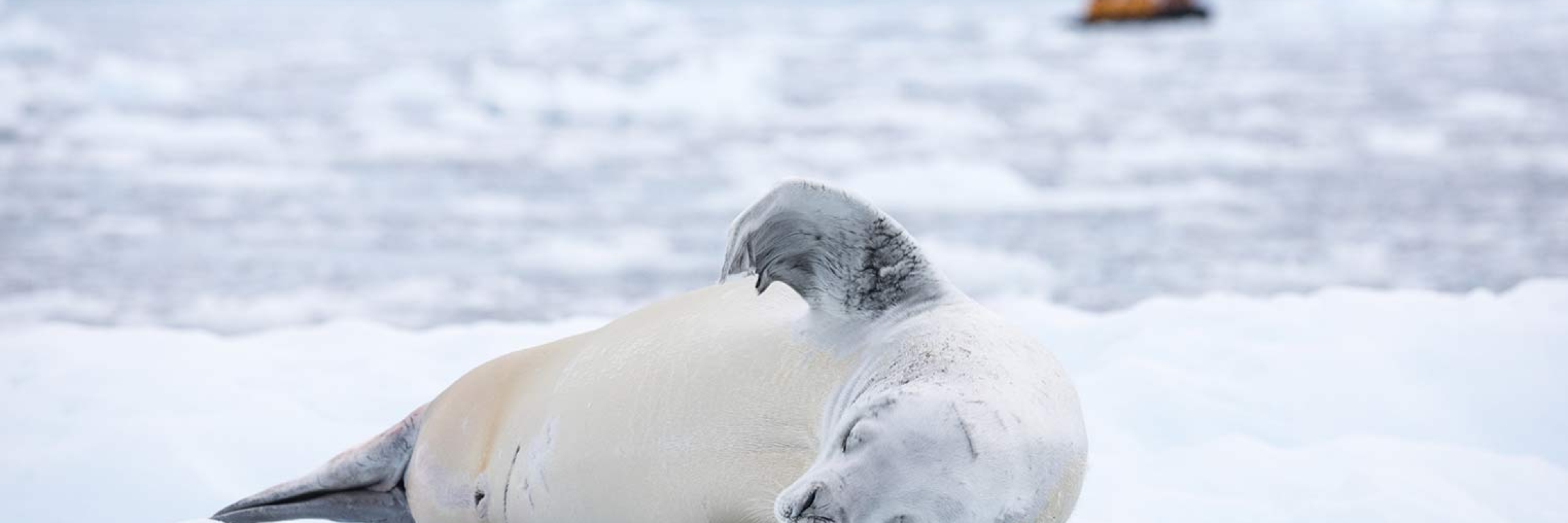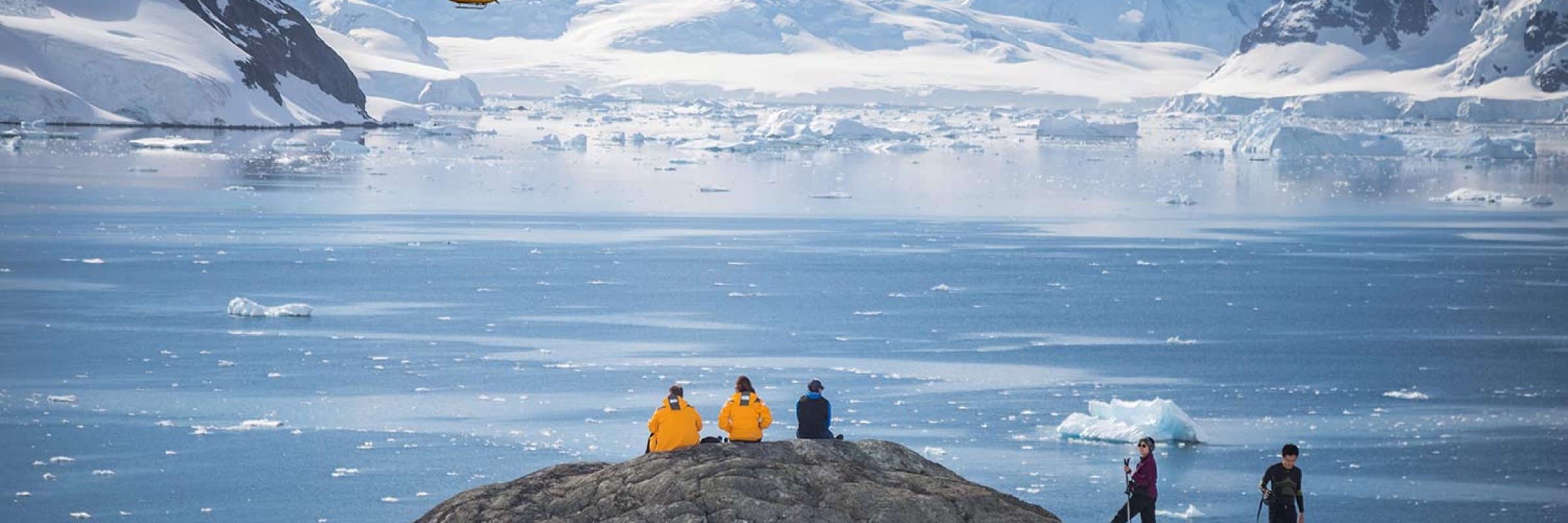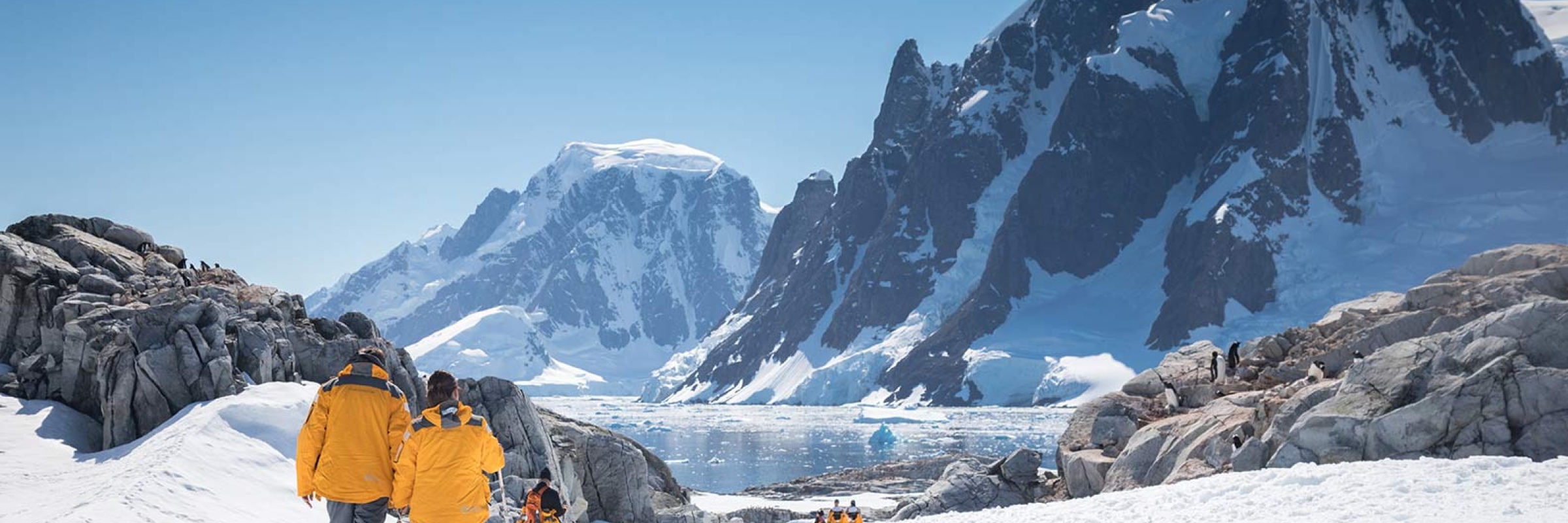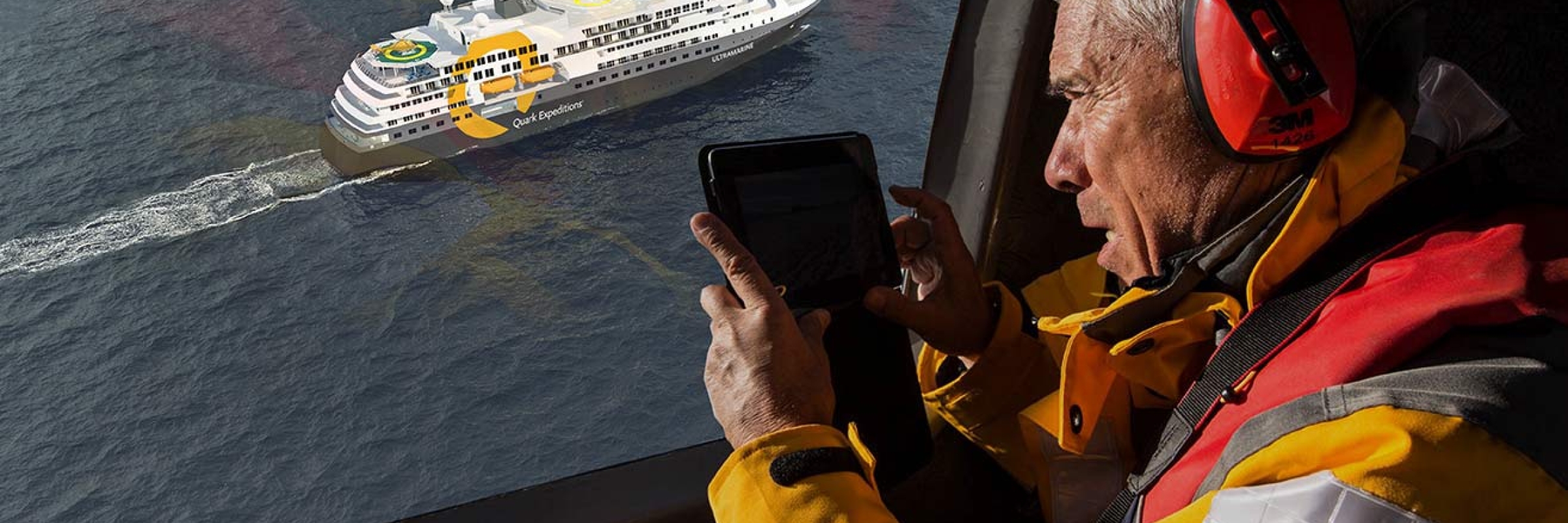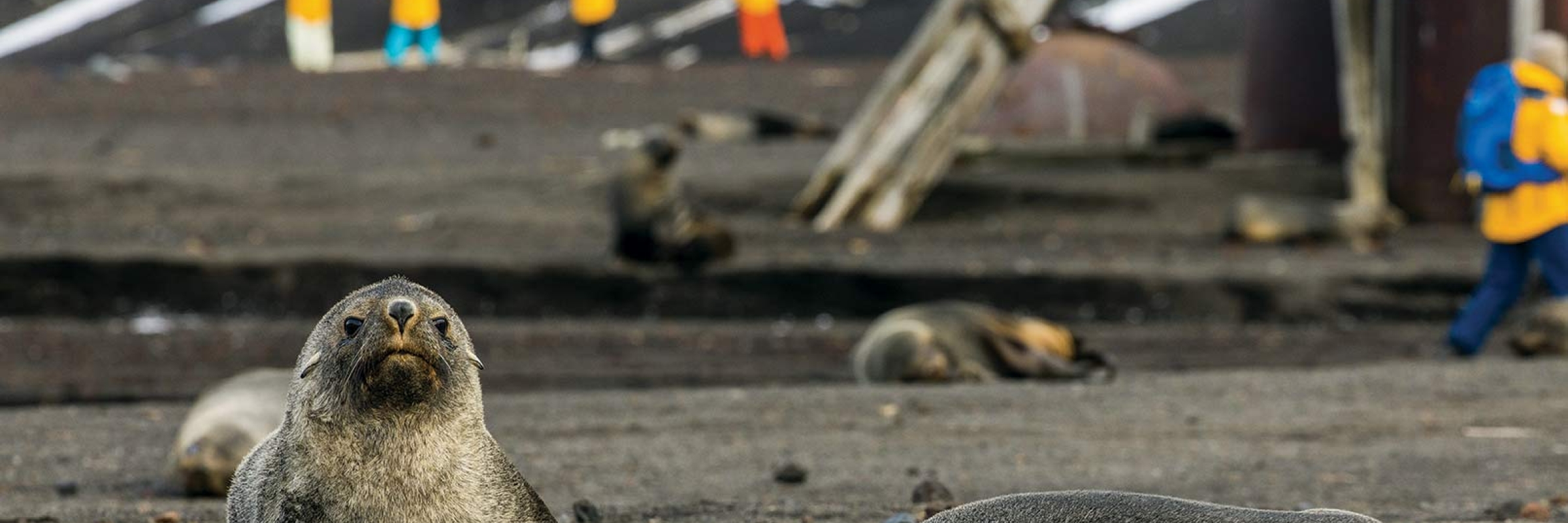You may arrive in Buenos Aires at any time during Day 1 of your itinerary. Upon arriving in this splendid city, known for its architecture and rich European heritage, you will independently transfer to your group hotel (pre-expedition hotel night included in mandatory transfer package).
Antarctic Explorer: Discovering the 7th Continent plus Cape Horn & Diego Ramirez
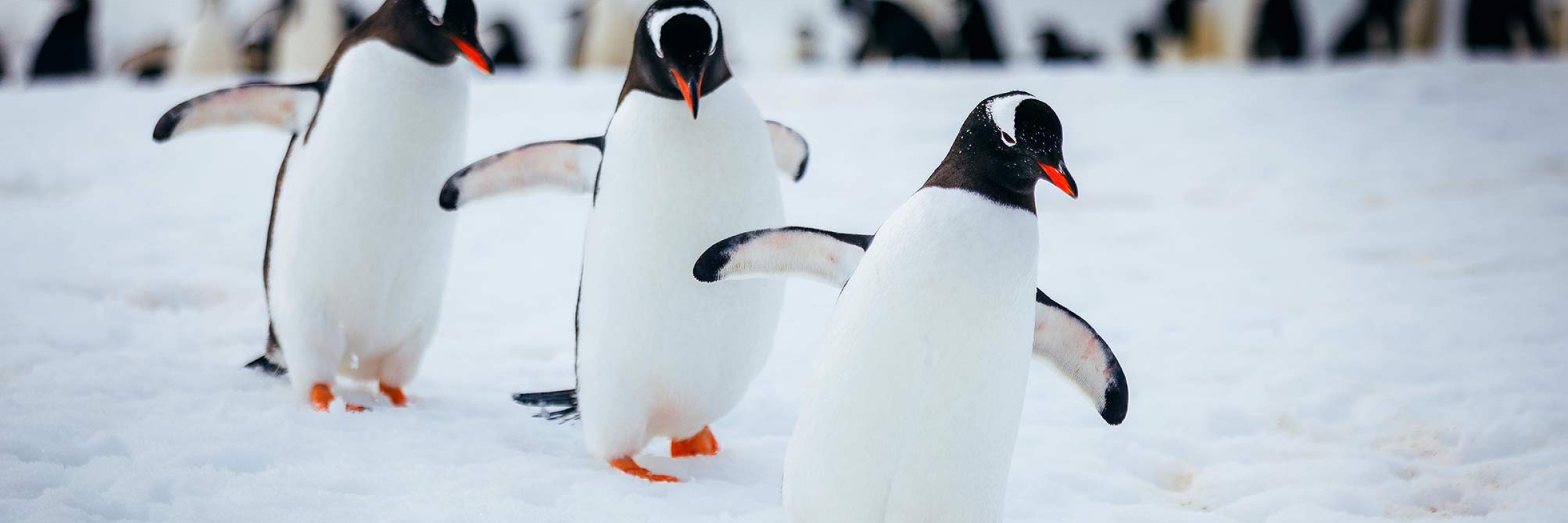
Antarctica is an incredible destination with the power to transform those who are fortunate enough to experience it. At Quark Expeditions, we’ve been delivering transformational polar experiences for three decades, and in that time we’ve realized that the more personalized an expedition is, the more enriching the experience will be. That’s why we’ve designed this guide; to help you plan your perfect expedition to the 7th continent.
If this is your first visit, this take on our classic Antarctic Explorer voyage gives you the best of the stunning Antarctic Peninsula, and on this special departure, the chance to land at the historical landmark of Cape Horn, and potentially visit albatross nesting grounds at Diego Ramírez Islands as well. Conquer the famed Drake Passage; explore majestic natural environments by Zodiac and on foot; get up close and personal with penguins, whales and other wildlife; and enjoy talks on history, biology and glaciology by our onboard polar experts.
Antarctica has been inspiring explorers for centuries—now it’s your turn. Be among the first guests on our pioneering new vessel, Ultramarine. This purpose-built vessel is designed to extend the boundaries of polar exploration and offer an unmatched Antarctic experience, including a flightseeing tour you’ll never forget and a range of adventure options more extensive than any other ship in its class. We’re excited to host you on your unforgettable adventure! Please feel free to reach out to our team of Polar Travel Advisers, who are happy to answer your questions and provide assistance at any time.
- Arrive in Buenos Aires, Argentina, the tango capital of the world, and let us take care of the rest of your journey
- Explore highlights of the Antarctic Peninsula
- Enjoy helicopter flightseeing from Ultramarine for a unique perspective of the Antarctic Peninsula
- Enjoy talks about the environment, human history and wildlife from our onboard polar experts
- Experience abundant wildlife, such as penguins, seals and whales
- Visit Cape Horn National Park, UNESCO World Biosphere Reserve and Diego Ramírez Islands, nesting grounds for many species of albatross
行程
Day 1 — Arrive in Buenos Aires, Argentina
Day 2 — Fly to Ushuaia and Embark
After an early breakfast at the hotel, the group will transfer to the airport and board our private charter flight to Ushuaia, Argentina.
Upon arrival, you will be transferred from the airport to a central downtown location to have some time on your own to explore this quaint port town before making your way to the pier.
After a late afternoon embarkation, you will sail along the historic Beagle Channel, which transects the Tierra del Fuego archipelago in the extreme south of South America.
Day 3 — Cape Horn and Diego Ramirez
Depending on conditions, we aim to start our journey to the “edge of the earth” with a visit to historic Cape Horn (Cabo de Hornos). At the southernmost point of the Tierra del Fuego (“Land of Fire”) archipelago, this steep, rocky headland on Hornos Island marks the northern boundary of the famous Drake Passage, where the Atlantic and Pacific Oceans meet. From the 1700s to the early 1900s, prior to the opening of the Panama Canal, this cape was part of a major global trade route. If sea and weather conditions allow, you may go ashore for a hike out to the lighthouse, the tiny Stella Maris (“Star of the Sea”) Chapel, and the albatross-shaped monument honoring the many mariners who lost their lives attempting to “round the Horn.” Atop the 1,394-foot (425 meter)- high windswept promontory pause for a moment to take in the panoramic view and to enjoy the peaceful solitude that can only be found at one of the most southern stretches of land in the world.
Your ship will then continue cruising farther south, to the Diego Ramírez Islands, the most southern point of South America and one of the least explored places on the planet. This small archipelago was actually thought to be the southernmost land mass in the world when it was discovered in 1619 by the Spanish Garcia de Nodal expedition. Named after the expedition’s cosmographer, the archipelago held this distinction for 156 years, until Captain James Cook’s discovery of the South Sandwich Islands in 1775. Weather permitting, we’ll Zodiac cruise around these tussock grass-covered islands to admire the abundant birdlife. A designated Important Bird Area, and part of the recently-designated Diego Ramirez Islands and Drake Passage Marine Park, the archipelago is home to millions of breeding seabirds, and an exceptional place for birdwatching. Binoculars in hand, birders will marvel at the sight of nesting black-browed albatross and grey-headed albatross. These islands are the southernmost mollymawk albatross breeding ground in the world. Sightings of dolphins, South American fur seals, and rockhopper, macaroni and Magellanic penguins are also possible here.
If conditions look more promising toward the end of your expedition, this itinerary day may take place after your Antarctic Peninsula exploration.
Days 4 & 5 — Crossing the Drake Passage
The unpredictable and exciting Drake Passage is an adventure unto itself. While being well taken care of by our expert onboard staff and leaders, you’ll have plenty of time to gaze out at the ocean, take pictures of seabirds swooping around the ship, and get to know your Expedition Team and fellow travelers.
Days 6 to 10 — South Shetland Islands and Antarctic Peninsula
Once the Drake Passage is left in our wake and the South Shetland Islands come into view, your Antarctic adventure truly begins. You will begin to appreciate why this region has long captivated the attention of explorers and travelers alike. On every visit to Antarctica, we witness something new or unexpected, which means your expedition will be unlike any other—a unique, personal experience.
Each day, you will take Zodiac excursions from the ship to explore local bays, channels and landing sites. With wildlife always at the forefront of our minds, you will visit penguin rookeries, scout for humpback and minke whales, and search for a number of southern seal species, including the cunning leopard seal.
The majesty of the Antarctic Peninsula’s mountains will enchant as you hike snowy pathways to vantage points offering panoramic views of your surroundings. You will discover that Antarctica is a land of extremes. At one moment you’ll be overcome with a feeling of complete isolation and silence, and the next you’ll be inspired by nature as a calving glacier crashes into a brilliant blue sea or a penguin waddles by to inspect your footwear.
Amid the serene silence of Antarctica, noisy interludes become indelible memories, such as penguins squabbling over prized pebbles. Each day will be different, carefully crafted by your Expedition Team to inspire and educate you about this wonderful part of the world.
Days 11 & 12 — Crossing the Drake Passage
The journey back across the Drake Passage provides a final opportunity to enjoy the invigorating Antarctic air. Spend time on the deck, watching for seabirds and scouting for whales, enjoy presentations by your Expedition Team and celebrate the experiences you’ve shared exploring the remarkable world of Antarctica.
Day 13 — Disembark in Ushuaia and Fly to Buenos Aires
You will arrive in Ushuaia in the morning and disembark after breakfast. The mandatory transfer package includes a little taste of Patagonia with a Tierra del Fuego National Park tour before transferring to the airport for the return group charter flight to Buenos Aires.
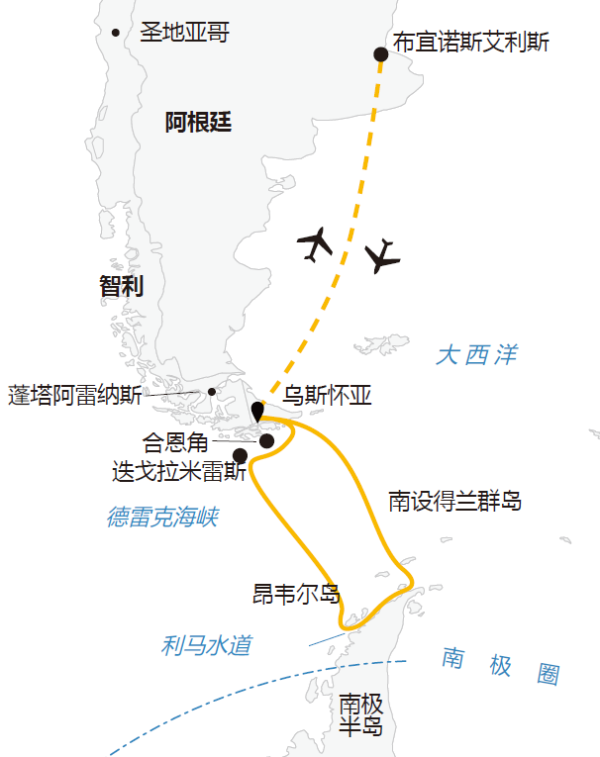
Day 1 — Arrive in Buenos Aires, Argentina
You may arrive in Buenos Aires at any time during Day 1 of your itinerary. Upon arriving in this splendid city, known for its architecture and rich European heritage, you will independently transfer to your group hotel (pre-expedition hotel night included in mandatory transfer package).
Day 2 — Fly to Ushuaia and Embark
After an early breakfast at the hotel, the group will transfer to the airport and board our private charter flight to Ushuaia, Argentina.
Upon arrival, you will be transferred from the airport to a central downtown location to have some time on your own to explore this quaint port town before making your way to the pier.
After a late afternoon embarkation, you will sail along the historic Beagle Channel, which transects the Tierra del Fuego archipelago in the extreme south of South America.
Day 3 — Cape Horn and Diego Ramirez
Depending on conditions, we aim to start our journey to the “edge of the earth” with a visit to historic Cape Horn (Cabo de Hornos). At the southernmost point of the Tierra del Fuego (“Land of Fire”) archipelago, this steep, rocky headland on Hornos Island marks the northern boundary of the famous Drake Passage, where the Atlantic and Pacific Oceans meet. From the 1700s to the early 1900s, prior to the opening of the Panama Canal, this cape was part of a major global trade route. If sea and weather conditions allow, you may go ashore for a hike out to the lighthouse, the tiny Stella Maris (“Star of the Sea”) Chapel, and the albatross-shaped monument honoring the many mariners who lost their lives attempting to “round the Horn.” Atop the 1,394-foot (425 meter)- high windswept promontory pause for a moment to take in the panoramic view and to enjoy the peaceful solitude that can only be found at one of the most southern stretches of land in the world.
Your ship will then continue cruising farther south, to the Diego Ramírez Islands, the most southern point of South America and one of the least explored places on the planet. This small archipelago was actually thought to be the southernmost land mass in the world when it was discovered in 1619 by the Spanish Garcia de Nodal expedition. Named after the expedition’s cosmographer, the archipelago held this distinction for 156 years, until Captain James Cook’s discovery of the South Sandwich Islands in 1775. Weather permitting, we’ll Zodiac cruise around these tussock grass-covered islands to admire the abundant birdlife. A designated Important Bird Area, and part of the recently-designated Diego Ramirez Islands and Drake Passage Marine Park, the archipelago is home to millions of breeding seabirds, and an exceptional place for birdwatching. Binoculars in hand, birders will marvel at the sight of nesting black-browed albatross and grey-headed albatross. These islands are the southernmost mollymawk albatross breeding ground in the world. Sightings of dolphins, South American fur seals, and rockhopper, macaroni and Magellanic penguins are also possible here.
If conditions look more promising toward the end of your expedition, this itinerary day may take place after your Antarctic Peninsula exploration.
Days 4 & 5 — Crossing the Drake Passage
The unpredictable and exciting Drake Passage is an adventure unto itself. While being well taken care of by our expert onboard staff and leaders, you’ll have plenty of time to gaze out at the ocean, take pictures of seabirds swooping around the ship, and get to know your Expedition Team and fellow travelers.
Days 6 to 10 — South Shetland Islands and Antarctic Peninsula
Once the Drake Passage is left in our wake and the South Shetland Islands come into view, your Antarctic adventure truly begins. You will begin to appreciate why this region has long captivated the attention of explorers and travelers alike. On every visit to Antarctica, we witness something new or unexpected, which means your expedition will be unlike any other—a unique, personal experience.
Each day, you will take Zodiac excursions from the ship to explore local bays, channels and landing sites. With wildlife always at the forefront of our minds, you will visit penguin rookeries, scout for humpback and minke whales, and search for a number of southern seal species, including the cunning leopard seal.
The majesty of the Antarctic Peninsula’s mountains will enchant as you hike snowy pathways to vantage points offering panoramic views of your surroundings. You will discover that Antarctica is a land of extremes. At one moment you’ll be overcome with a feeling of complete isolation and silence, and the next you’ll be inspired by nature as a calving glacier crashes into a brilliant blue sea or a penguin waddles by to inspect your footwear.
Amid the serene silence of Antarctica, noisy interludes become indelible memories, such as penguins squabbling over prized pebbles. Each day will be different, carefully crafted by your Expedition Team to inspire and educate you about this wonderful part of the world.
Days 11 & 12 — Crossing the Drake Passage
The journey back across the Drake Passage provides a final opportunity to enjoy the invigorating Antarctic air. Spend time on the deck, watching for seabirds and scouting for whales, enjoy presentations by your Expedition Team and celebrate the experiences you’ve shared exploring the remarkable world of Antarctica.
Day 13 — Disembark in Ushuaia and Fly to Buenos Aires
You will arrive in Ushuaia in the morning and disembark after breakfast. The mandatory transfer package includes a little taste of Patagonia with a Tierra del Fuego National Park tour before transferring to the airport for the return group charter flight to Buenos Aires.

